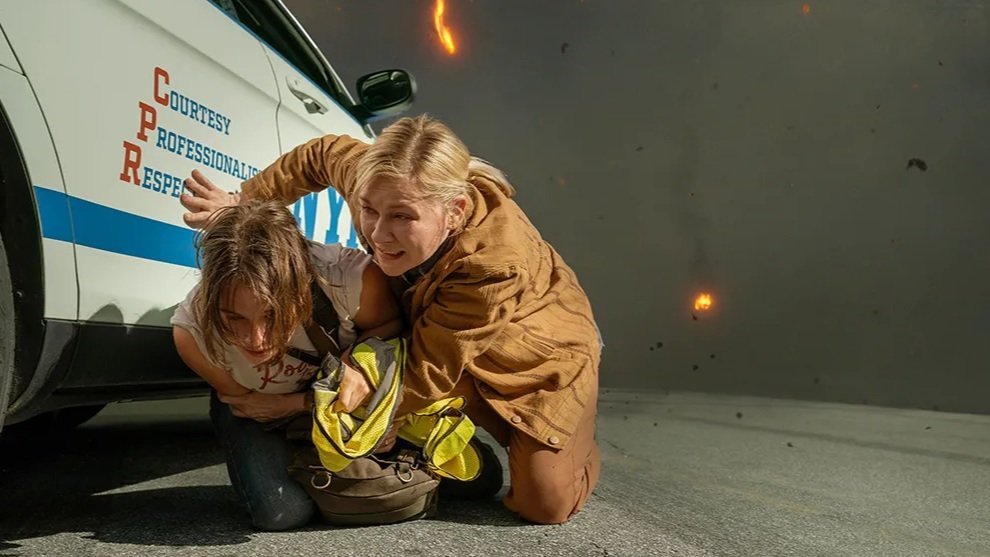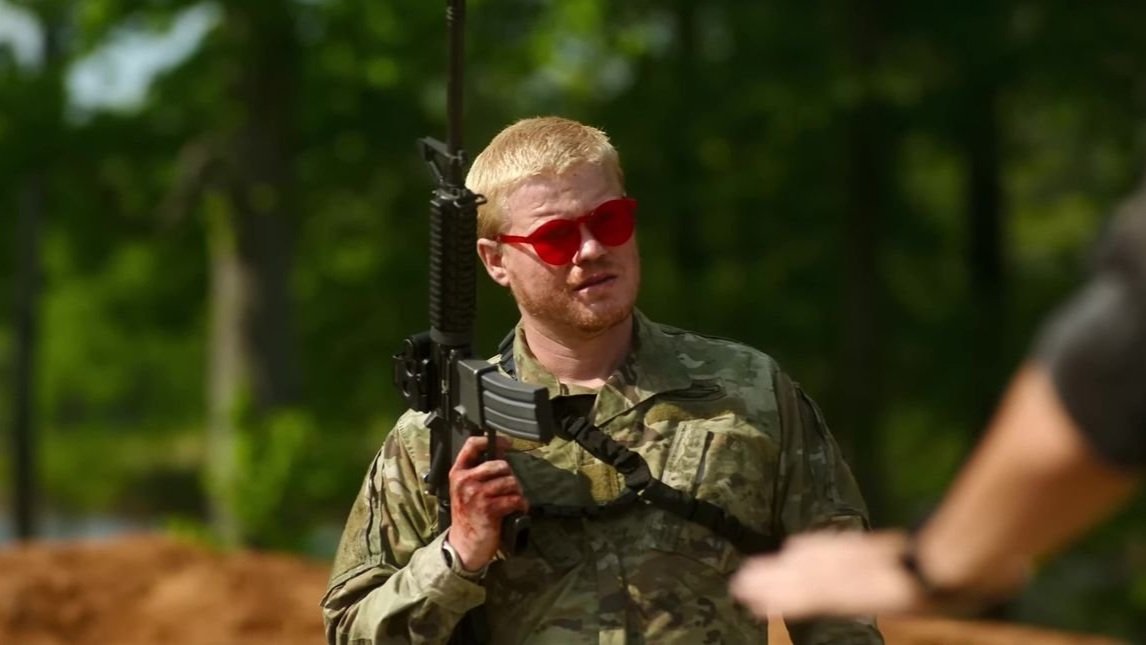'Civil War' REVIEW: Oversimplifying America as a Backdrop for War Photojournalism
‘Civil War’ REVIEW: Oversimplifying America as a Backdrop for War Photojournalism
An illustration from Civil War's promotional poster.
The year is 2024 and the world is boiling in conflict. As tensions between global superpowers worsen, authoritarian governments jump back on the rise, and the ongoing brutal Palestinian genocide by Israel looms over the world; the United States of America remains a key deciding player amid all these international events.
With its very own socio-political issues marked by controversial legislations, widespread rallies, extremist ideology groups, hate crimes, mass shootings, and police brutality, to name a few, the USA’s affairs are on the forefront of every news page. So much so, that growing fears of a second American civil war are felt internationally.
Civil War, an action-war film by acclaimed director Alex Garland (Ex Machina, Annihilation) banks on this timely social fear of the same name. Produced by A24, it is the rising film company’s most expensive project so far, with a $50 million budget and a growing box office of $66.5 million. Built on the dystopian premise of the American government at war with several rebellious states, the film explores graphic violence and socio-political tensions through the lens of a photojournalist team on the road.
Despite its bold pitch and constant marketing of a modern American civil war, Civil War is not a movie focused on America nor its rising tensions with one another. Instead, the film is more about a horrifying display of photojournalism during wartime.
Kirsten Dunst and Cailee Spaeny in Civil War.
Civil War is defined by its bleak visuals, bombarding viewers with adrenaline-inducing war sequences and chilling displays of human brutality. It presents a morally complicated yet sad reality, wherein people are killed left and right, only to be converted into still images and consumed by many.
In the modern era of Hollywood blockbusters, where war movies are reduced to sanitized shootouts, Civil War does not shy away from depicting the murders, trauma, and chaos warfare brings.
The film’s sound design and score also elevate the experience, effectively immersing the audience into the intense nature of it all. Weapons are strikingly loud, explosions become muted, and the powerful song choices all add to the rush.
There is barely a comfortable moment in the film, as everyone is itching to get the next shot. Civil War numbs audiences with constant violence, while not being able to prevent any of it, as experienced by its protagonists.
Cailee Spaeny and Kirsten Dunst taking cover in Civil War
Kirsten Dunst leads the film as Lee Miller, an acclaimed war photojournalist, portraying a stoic professional secretly traumatized by the battle scenes she has captured. She carries the story with a conflicted and empathic nature, providing a great example of a person desensitized by war.
She’s someone who can shoot photographs to preserve lives on frames, but never shoots back with a gun to save any of them. In every scene, Dunst moves the story forward with her layered, realistic performance.
Supporting Miller are her colleagues Joel (Wagner Moura), a Reuters journalist and Sammy (Stephen Mckinley Henderson), an elderly mentor from the New York Times. These two serve as Lee’s moral compasses, lending the film both its most light-hearted moments and also its heart-wrenching ones. Their unique viewpoints towards journalism also serve as great counterpoints to Lee, providing an internal tension between the characters.
Cailee Spaeny shines in her performance as Jessie Cullen, a young, aspiring photojournalist who idolizes Lee Miller. Amazingly, she fits right into the caliber team of veteran actors and massively contributes to the film’s tension. Spaeny’s character reflects the viewers as she becomes hooked into war photojournalism, even if it could risk her life or soul, just to be like her idol.
Jesse Plemons as a racist ultranationalist militant.
In cameo roles, Nick Offerman plays a dictatorial president while Jesse Plemons terrifies as a racist ultranationalist militant. Both of these roles are notable for being familiar representations of American right-wing, extremist political figures, especially with Plemons’ cold-blooded killer character, who steals the show with less than eight minutes of screentime. At the same time, the characters also represent the film’s flaws of making its politics vague and its story an incomplete one.
Writing-wise, Civil War is lackluster in presenting its fictional political tensions and worldbuilding.
For example: The United States was said to be broken up into four factions (Loyalist States, Western Forces, Florida Alliance, and New People's Army), yet none of these details would eventually matter as they are barely explored in the film, aside from occasional name-drops.
The lack of presentation of the civil war’s root conflicts and antagonistic president also make its scenario an almost generic one. The movie is also questionable with its references, casually dropping modern American buzzwords such as Antifa, FBI, and some of the fifty states' names, just to remind you it's all set in America.
Nick Offerman as the President of the United States.
Civil War drops chaos after chaos, losing sight of several opportunities to provide interesting context. While it may not be the filmmaker’s intention to present the film as a heavily socio-political one, the implications behind a modern American civil war are not something to oversimplify. The film is barely about its own civil war and avoids reflecting on real-world fears of one. There is a ton of wasted potential for what could’ve been a bolder, more relevant story.
The film’s marketing was also criticized for its use of artificial intelligence (AI) generated posters to promote itself online. In these images, scenes of dystopia such as the Las Vegas sphere’s destruction and refugees in the Chicago River were shown. None of these appear in the actual film or make logical sense with its AI-generated picture flaws.
While this is an issue outside the film’s scope; it can be treated as a reflection of Civil War’s infatuation with its marketable premise while having a deep disinterest with actually expanding it. Alex Garland only uses America as a familiar backdrop for capturing scenes of violence, carelessly skimming over the implications that come with doing so.
Replace the setting of Civil War with any other country and it could still work, making America an almost irrelevant point in the film and its story of photojournalism a more universally relevant one. It shoots a lot of shots but does not say anything new or much about anything at all. For a war movie, it is technically impressive but is afraid to take storytelling risks.
Despite its shortcomings, Civil War is engaging as a simple action-war film that showcases photojournalism. In chaotic times like 2024 though, Civil War was truly a missed opportunity in representing relevant issues of the modern world and reimagining a deeply-rooted scenario.
Even if the film had changed its title into something more appropriate, Civil War unfortunately just lacks substance to the conflict it presents. It may not have been the story we were promised to nor the best version of itself, yet the film remains a thrilling cinematic experience worth giving a try.













